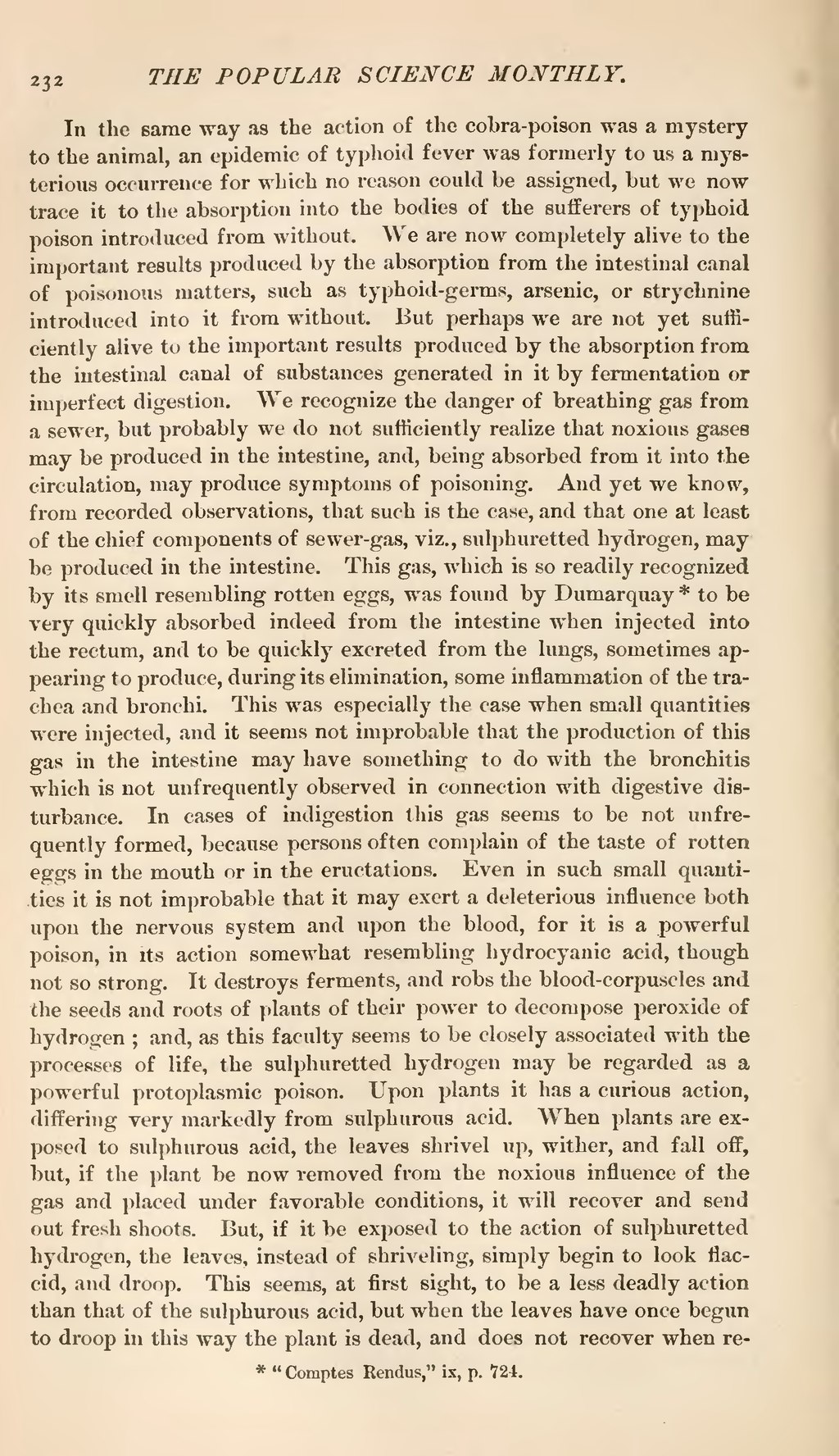In the same way as the action of the cobra-poison was a mystery to the animal, an epidemic of typhoid fever was formerly to us a mysterious occurrence for which no reason could be assigned, but we now trace it to the absorption into the bodies of the sufferers of typhoid poison introduced from without. We are now completely alive to the important results produced by the absorption from the intestinal canal of poisonous matters, such as typhoid-germs, arsenic, or strychnine introduced into it from without. But perhaps we are not yet sufficiently alive to the important results produced by the absorption from the intestinal canal of substances generated in it by fermentation or imperfect digestion. We recognize the danger of breathing gas from a sewer, but probably we do not sufficiently realize that noxious gases may be produced in the intestine, and, being absorbed from it into the circulation, may produce symptoms of poisoning. And yet we know, from recorded observations, that such is the case, and that one at least of the chief components of sewer-gas, viz., sulphuretted hydrogen, may be produced in the intestine. This gas, which is so readily recognized by its smell resembling rotten eggs, was found by Dumarquay[1] to be very quickly absorbed indeed from the intestine when injected into the rectum, and to be quickly excreted from the lungs, sometimes appearing to produce, during its elimination, some inflammation of the trachea and bronchi. This was especially the case when small quantities were injected, and it seems not improbable that the production of this gas in the intestine may have something to do with the bronchitis which is not unfrequently observed in connection with digestive disturbance. In cases of indigestion this gas seems to be not unfrequently formed, because persons often complain of the taste of rotten eggs in the mouth or in the eructations. Even in such small quantities it is not improbable that it may exert a deleterious influence both upon the nervous system and upon the blood, for it is a powerful poison, in its action somewhat resembling hydrocyanic acid, though not so strong. It destroys ferments, and robs the blood-corpuscles and the seeds and roots of plants of their power to decompose peroxide of hydrogen; and, as this faculty seems to be closely associated with the processes of life, the sulphuretted hydrogen may be regarded as a powerful protoplasmic poison. Upon plants it has a curious action, differing very markedly from sulphurous acid. When plants are exposed to sulphurous acid, the leaves shrivel up, wither, and fall off, but, if the plant be now removed from the noxious influence of the gas and placed under favorable conditions, it will recover and send out fresh shoots. But, if it be exposed to the action of sulphuretted hydrogen, the leaves, instead of shriveling, simply begin to look flaccid, and droop. This seems, at first sight, to be a less deadly action than that of the sulphurous acid, but when the leaves have once begun to droop in this way the plant is dead, and does not recover when re-
- ↑ "Comptes Rendus," ix, p. 724.
